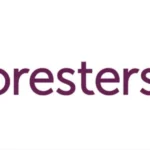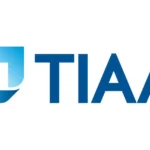Introduction
“Launching a transportation business with a single van requires pinpointing your service niche and understanding market demand. “
Starting a transportation business with just one van involves setting up a service to move people or goods from one place to another. It requires planning, legal compliance, and financial management. With a clear business plan and understanding of the local market, you can launch and grow your business effectively.
Ready to start your own transportation business? Follow our step-by-step guide to turn your van into a successful venture. Whether you want to offer delivery services or shuttle rides, this article will help you get started.
Learn about the essentials like choosing the right vehicle, obtaining necessary licenses, and marketing your services. Our tips will ensure you set up your business efficiently and make informed decisions for growth.
Define Your Business Concept

To begin, you need to define your business concept. This involves deciding on the type of transportation service you want to offer. Are you focusing on local deliveries, shuttle services, or perhaps specialized transport like medical or luxury services?
Understanding your target market and their needs will help shape your service offering. Make sure your concept addresses a specific need or gap in the market.
Conduct Market Research
Market research is crucial for understanding the demand for your transportation services. Analyze the local market to identify potential customers and competitors. Look into current trends and pricing strategies to ensure your business is competitive. This research will guide your service offerings and help you position your business effectively.
Create a Business Plan
A business plan outlines your business goals, strategies, and financial projections. It should include your service offerings, target market, and marketing strategies. Your plan will serve as a roadmap for your business and help you secure financing if needed. Be sure to include a detailed budget and growth plan.
Legal Structure and Registration
Choosing the right legal structure for your business is essential. Whether you opt for a sole proprietorship, partnership, or limited liability company (LLC), this decision affects your taxes, liability, and business operations. Register your business name and obtain an Employer Identification Number (EIN) for tax purposes.
Obtain Necessary Permits and Licenses
Before operating, you must obtain the necessary permits and licenses. This can include a business license, commercial vehicle registration, and specialized permits depending on your service type. Check with your local government and transportation authorities to ensure compliance.
Insurance Requirements
Insurance is a vital part of starting your transportation business. You’ll need liability insurance to cover potential accidents and damages. Vehicle insurance is also essential to protect your van. Evaluate your insurance options and choose a policy that covers your specific needs.
Purchase or Lease Your Van

Decide whether to purchase or lease your van based on your budget and long-term plans. When choosing a van, consider reliability, fuel efficiency, and cargo space. Ensure the van is well-maintained and suitable for the type of transportation service you plan to offer.
How To Build Business Credit Fast
Vehicle Maintenance and Safety
Regular maintenance is crucial for keeping your van in good condition. Implement a maintenance schedule that includes routine inspections, oil changes, and tire checks. Adhering to a safety checklist ensures your vehicle remains safe for operation and minimizes the risk of breakdowns.
Set Up Your Finances
Setting up your finances involves opening a business bank account and setting up accounting software. Keep track of your income and expenses to manage your cash flow effectively. Consider consulting with a financial advisor to help with budgeting and financial planning.
Develop Pricing Strategies
Pricing your services competitively is key to attracting customers. Research market rates and set prices that reflect the value of your service while covering your costs. Offer different pricing packages or discounts to appeal to a broader range of customers.
Create a Brand Identity
Building a strong brand identity helps you stand out in the market. Develop a logo, choose brand colors, and create a slogan that reflects your business values. Consistency in your branding across all marketing materials will help establish a recognizable image.
Build a Website and Online Presence

A professional website is essential for reaching potential customers. Include information about your services, pricing, and contact details. Utilize social media platforms to promote your business and engage with your audience. An online presence helps attract and retain customers.
Marketing and Advertising
Marketing your transportation business involves using various advertising channels. Consider options like online ads, flyers, and local partnerships. Engage in networking events and community activities to increase visibility and build relationships with potential clients.
Customer Service Strategies
Excellent customer service is key to retaining clients and gaining referrals. Develop a plan for handling customer inquiries, complaints, and feedback. Ensure your drivers are trained to provide a professional and courteous experience.
Hire Additional Help if Needed
As your business grows, you may need to hire additional staff. This could include drivers, administrative support, or marketing personnel. Ensure that you recruit qualified and reliable individuals who align with your business values.
Establish Partnerships and Networking
Building partnerships with local businesses and networking with industry professionals can help expand your client base. Form alliances with companies that need transportation services and attend industry events to make valuable connections.
Develop a Scheduling and Booking System
A scheduling and booking system helps manage appointments and optimize your service efficiency. Implement an online booking system or mobile app to streamline the process. This ensures that your operations run smoothly and customers can easily book your services.
Monitor and Evaluate Performance
Regularly monitor and evaluate your business performance to ensure it meets your goals. Track key metrics such as customer satisfaction, revenue, and operational efficiency. Use this data to make informed decisions and adjust your strategies as needed.
Expand Services and Scale Up
Once your business is established, consider expanding your services or adding more vans to your fleet. Evaluate market demand and assess the feasibility of scaling up. Expansion can lead to increased revenue and a broader customer base.
Stay Compliant and Adapt

Staying compliant with regulations and adapting to industry changes is crucial for long-term success. Keep up with new laws, technological advancements, and market trends. Regularly review your policies and procedures to ensure they remain relevant.
Additional Tips
- Track expenses closely to manage your budget effectively.
- Invest in technology for better route planning and efficiency.
- Engage with customers through feedback surveys to improve services.
- Join industry associations for support and resources.
- Stay updated on industry trends and best practices.
Pros and Cons of Starting a Transportation Business with One Van
| Pros | Cons |
| Low initial investment with just one van. | Limited capacity with only one van. |
| Flexibility in service offerings. | Initial workload may be high. |
| Potential for growth as demand increases. | Risk of operational challenges. |
ANSWER TO KEY QUESTION
1. What type of insurance do I need for a transportation business?
You need liability insurance to cover accidents and damages, and vehicle insurance to protect your van. Consider additional coverage based on your specific services.
2. How much does it cost to start a transportation business with one van?
Costs vary depending on factors like van purchase or lease, insurance, and permits. On average, initial expenses can range from $5,000 to $15,000.
3. How do I find customers for my transportation business?
Use local advertising, build an online presence, and network with local businesses. Offer promotions and referrals to attract new clients.
4. What should I include in my business plan?
Your business plan should outline your service offerings, target market, financial projections, and marketing strategies. It serves as a roadmap for your business.
5. How often should I maintain my van?
Follow a regular maintenance schedule that includes routine inspections, oil changes, and tire checks. Regular upkeep ensures the van remains in good working condition.
Vehicle Maintenance Checklist
| Maintenance Task | Frequency | Notes |
| Oil Change | Every 3,000-5,000 miles | Check oil level regularly |
| Tire Inspection | Monthly | Rotate tires every 6,000 miles |
| Brake Check | Every 10,000 miles | Inspect brakes for wear and tear |
| Fluid Levels | Monthly | Check and top up engine coolant, transmission fluid |
| Battery Check | Every 6 months | Ensure battery terminals are clean and secure |
Conclusion
starting a transportation business with just one van can be a highly rewarding venture if approached strategically. By clearly defining your service, conducting thorough market research, and creating a comprehensive business plan, you set a solid foundation for your business.
This initial preparation helps ensure that you are well-equipped to meet the demands of the market and navigate the challenges of the industry.
Ensuring that you comply with all legal and insurance requirements is crucial for operating legally and safeguarding your investment.
Regular maintenance of your van and focusing on excellent customer service will help you build a positive reputation and attract repeat business. Your ability to adapt and respond to customer needs will play a significant role in your business’s success.
With careful planning, dedication, and a commitment to quality, you can successfully launch and grow your transportation business. As demand increases, you may find opportunities to expand your services or fleet. Staying proactive and continuously evaluating your business performance will help you achieve long-term success and unlock further growth potential.

Hi, I’m Amaliyah-Richard! I’m a dedicated author at Skyvoxes. I hold a Bachelor’s degree in Business, and I love writing about all things business. My aim is to make complex business topics easy to understand and accessible for everyone. Whether you’re a seasoned professional or just starting out, I hope my articles provide you with valuable insights and practical advice.










